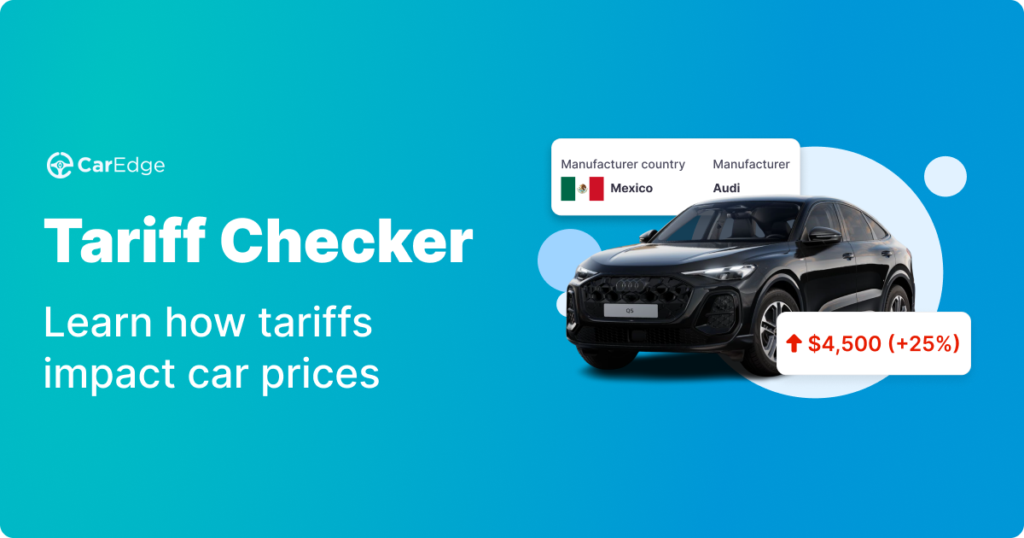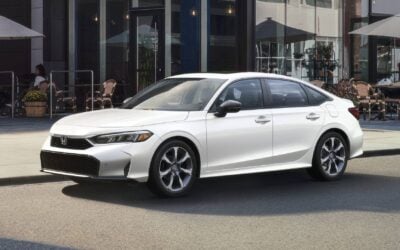It’s already tough to find a new car under $30,000 — and if new tariffs on imported vehicles go into effect, it’s about to get even harder.
The Trump administration’s new 25% tariffs on imported cars and parts could add thousands to the price of some of America’s most affordable vehicles, according to Bloomberg reporting in Automotive News. Models built in South Korea, Mexico, and Canada — including popular budget models from General Motors, Hyundai, Ford, and Nissan — would be hit hardest. The result? Some of the cheapest new cars on the market might disappear entirely.
Why This Matters
Car prices are already near record highs, with the average new vehicle now costing nearly $48,641 according to the latest market update. For budget-conscious drivers, the small pool of new cars under $30,000 is one of the last affordable options. But about half of those vehicles are built outside the U.S., meaning they’re directly in the crosshairs of these tariffs.
According to Cox Automotive, vehicles assembled in Mexico or Canada could see average price hikes of $5,855 if the tariffs are fully passed on to consumers. And because these tariffs target the very models designed to be affordable, the impact could be especially painful for first-time buyers, younger drivers, and working-class families.
Here’s a look at the latest round of tariffs from the Trump administration as of March 28, 2025:
| Targeted Countries | Product | Tariff | Status |
|---|---|---|---|
| All imports | Steel, aluminum | 25% | Began March 12, 2025 |
| All imports | Semiconductors | 25% | Expected in early April 2025 |
| All imports | Pharmaceuticals | 25% | Expected in early April 2025 |
| All imports | Cars, auto parts | 25% | To begin on April 3 for cars, May 3 for parts |
| All imports | Copper | Unknown | Unclear |
Which Cars Are at Risk?

Here are just a few of the vehicles that could be affected:
- Chevrolet Trax and Trailblazer – Both built in South Korea, the 2025 Trax starts at $21,795, and the 2025 Trailblazer starts a bit higher at $24,395. GM sold over 200,000 Trax crossovers last year.
- Jeep Compass – Made in Mexico, the 2025 Compass starts at $28,895, but is often the subject of large manufacturer incentives.
- Ford Maverick – The Maverick is ‘hecho en Mexico’, and is one of the only trucks still available for under $30,000.
- Hyundai Venue and Elantra – Both are built in South Korea, and remain the most affordable options from Hyundai. The Venue starts at just $21,650, making it one of the cheapest cars on sale in the U.S., period. The Elantra has seen major upgrades in recent years, and now starts at $23,320.
- Kia Soul and K4 – The Kia Soul is the brand’s entry-level SUV, and starts at $21,885. The K4 is the newest model in the Kia lineup, and sells quickly with a base price of $23,165.
- Nissan Kicks, Sentra, and Versa – Nissan’s three most affordable models are all assembled in Mexico. The Kicks (from $23,220), Sentra (from $22,730) are both expected to see price increases. The cheapest new car in America, the 2025 Nissan Versa, is likely headed for the graveyard following 2025. With the new tariffs eating into already slim margins, the latest developments are likely the final nail in the coffin for new cars under $20,000.
See if your next car is impacted by tariffs with our free auto tariff checker:

What Might Survive?
There are a few exceptions. Honda and Toyota still build some affordable cars in the U.S., including:
- Honda Civic Hatchback – Made in Indiana, starting at $28,600.
- Toyota Corolla – Built in Mississippi, with a base price of $23,460.
If these tariffs take effect, these could be the last true “budget” new cars made in America. These two cars are already among the fastest-selling cars in America. With fewer affordable options to come, competition, and even prices, may soon increase.
What Automakers Are Saying
Industry leaders are sounding the alarm. Ford CEO Jim Farley is not mincing words, saying at an industry conference that 25% tariffs would be “devastating” and would “blow a hole in the U.S. industry that we’ve never seen.” Stellantis chairman John Elkann warned that the tariffs could threaten affordability and hurt demand. Even Trump has acknowledged that vehicle prices may rise, though he argues that long-term gains in domestic manufacturing will be worth the short-term pain.
But in the meantime, automakers will face tough decisions. Some may stop importing their most affordable vehicles altogether. Others might simply pass the cost along to buyers.
The Bigger Picture: Affordability Is Already a Crisis
This tariff fight comes at a time when car affordability is already stretched thin. High interest rates and inventory shortages have pushed many would-be new car buyers into the used market. But even there, things aren’t easy.
The average used car now in inventory is over six years old. This marks an all-time high as drivers hold on to their vehicles for longer. The pandemic disrupted production, and we’re still feeling the ripple effects today. Fewer lease returns and a tighter supply of 1- to 3-year-old models have driven up prices on older used cars, too. If tariffs price out would-be new car buyers from the market, we could see used car prices climb higher yet again.
We track used car prices weekly here
What This Means for Car Buyers Today
If you’re in the market for a car under $30,000, it may be time to act before prices rise even further. Now is a good time to compare the latest manufacturer incentives, from zero percent financing to cheap lease deals. Unfortunately, some of these models are more likely to disappear entirely due to tariffs eliminating slim profit margins for budget models.
If you’re looking to stretch your budget but you’re not ready to buy, you might find better value in a lightly used car in the months ahead. However, if tariffs stick around for several months or more, even used car prices are likely to be impacted. CarEdge is tracking these developments closely. Check out our Vehicle Tariff Checker to see how your favorite model might be impacted.













0 Comments